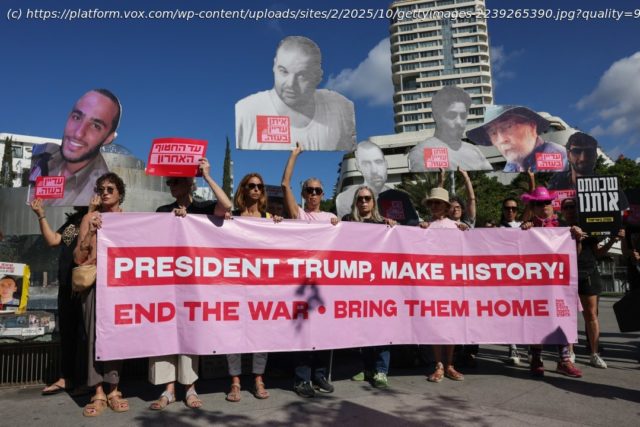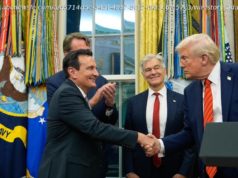And five other questions about the deal, answered.
After more than two years, Israel and Hamas have finally reached a ceasefire deal to free all remaining Israeli hostages and allow aid to flow into Gaza again. I spoke with my colleague Zack Beauchamp about the deal, what it could mean for Israeli Prime Minister Benjamin Netanyahu, and what comes next for Vox’s daily newsletter, Today, Explained. Our conversation is below, and you can sign up for the newsletter here for more conversations like this.Today, Explained
Understand the world with a daily explainer, plus the most compelling stories of the day.
Israel and Hamas have a deal. What’s been agreed upon?
Both Israel and Hamas have agreed to a staged process, but only phase one is fully agreed upon. The top line here is that you have the release of Israeli hostages and the bodies of those hostages that have died or been killed, in exchange for a release of Palestinian prisoners and an end to the fighting. Israel will withdraw from large chunks of the Gaza Strip, but it will retain a presence on the ground, at least during phase one. The most important thing is that they will stop fighting. There will be no more attacks happening inside Gaza, and aid will be allowed to flow into Gaza.
A month ago, Israel was bombing Hamas negotiators. How are we, a month later, at a deal?
Right now, based on the limited information we have, the key factor seems to be political will, specifically political will from the Trump administration. They had not been making a priority out of Israel-Palestine peace, to put it mildly, after the first ceasefire they brokered foundered in March.
Israel imposed the aid cutoff on Gaza, and the Trump administration basically said, Go ahead. We’re not going to do anything about it. And that led to the worst humanitarian crisis of war, including the outbreak of what appeared to be famine in Gaza.
Recently, the Trump administration decided that it wants to get back involved in trying to make an end to the Gaza war. It’s not clear exactly what the timeline was going to be, but that timeline changed when Israel attacked Doha, Qatar. The Trump administration has very strong ties to the Gulf Arab states, so they accelerated their timeline and started to put immense pressure on all of the different parties in lots of different ways to try to force a ceasefire.
How much credit do Trump and his administration deserve for getting this done?
Honestly, a lot — at least, if the early evidence continues to be borne out. Trump had a unique relationship with many of the key people involved. Trump has very strong ties not only to Netanyahu and his political fortunes — Trump is very popular on the Israeli right, and so he had a lot of leverage politically over Netanyahu — but relationships with the Gulf monarchies, as well as the leaders of Egypt and Turkey.
One of these dictatorships, Qatar, was a really important international partner of Hamas. So Trump worked with Qatar, Egypt, and Turkey to push Hamas from their end to accept the deal, and Trump uses his leverage over Netanyahu to try to force the Israelis into a deal. So you end up getting a situation where the stars have aligned for there to be at least a temporary ceasefire.
One of the dynamics here is that none of the leadership on either side really wanted an end to the war on terms the other would accept. They had to be forced into it. There were multiple points where it looked like each side wanted the talks to fail to be able to credibly blame the other one.






